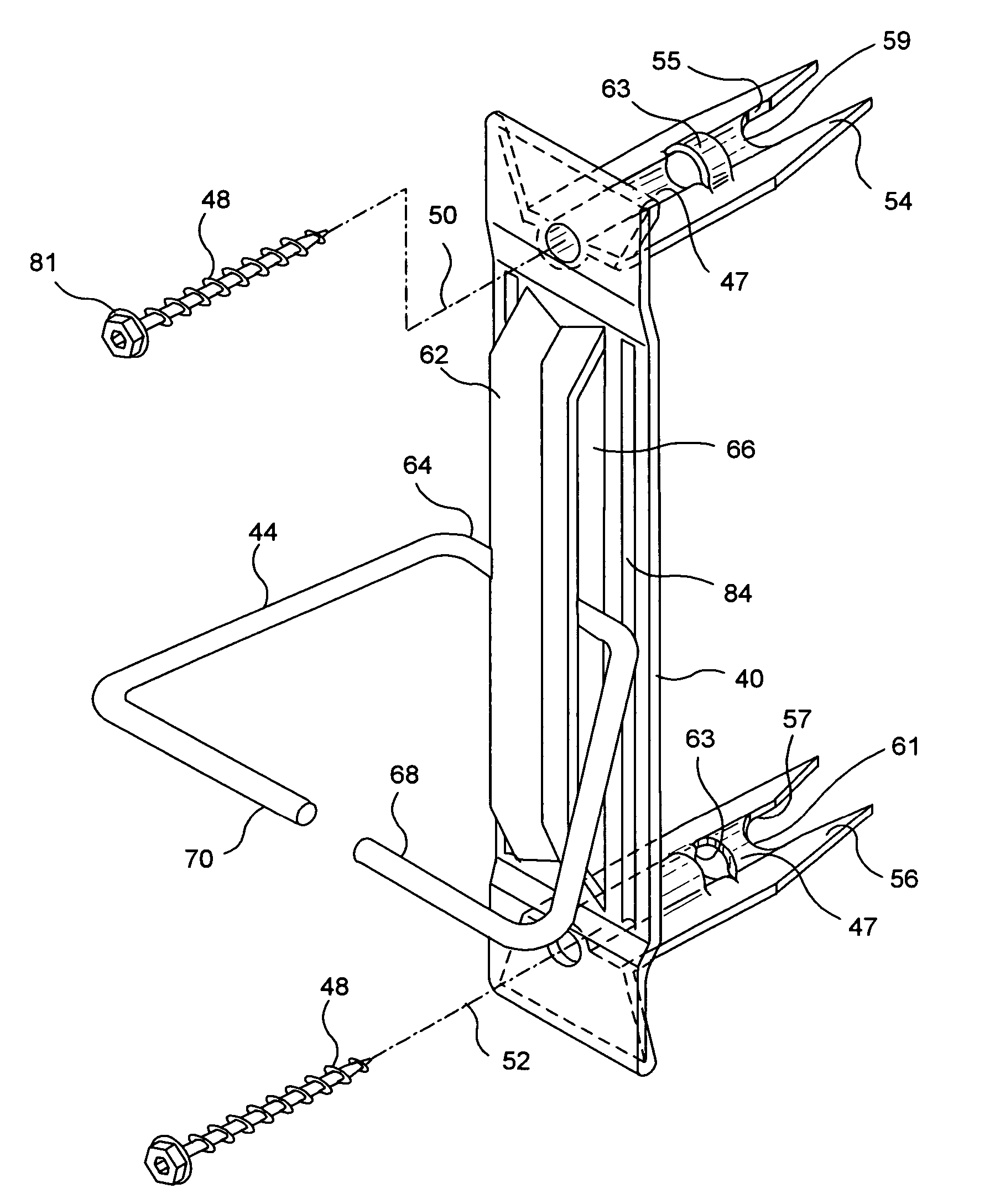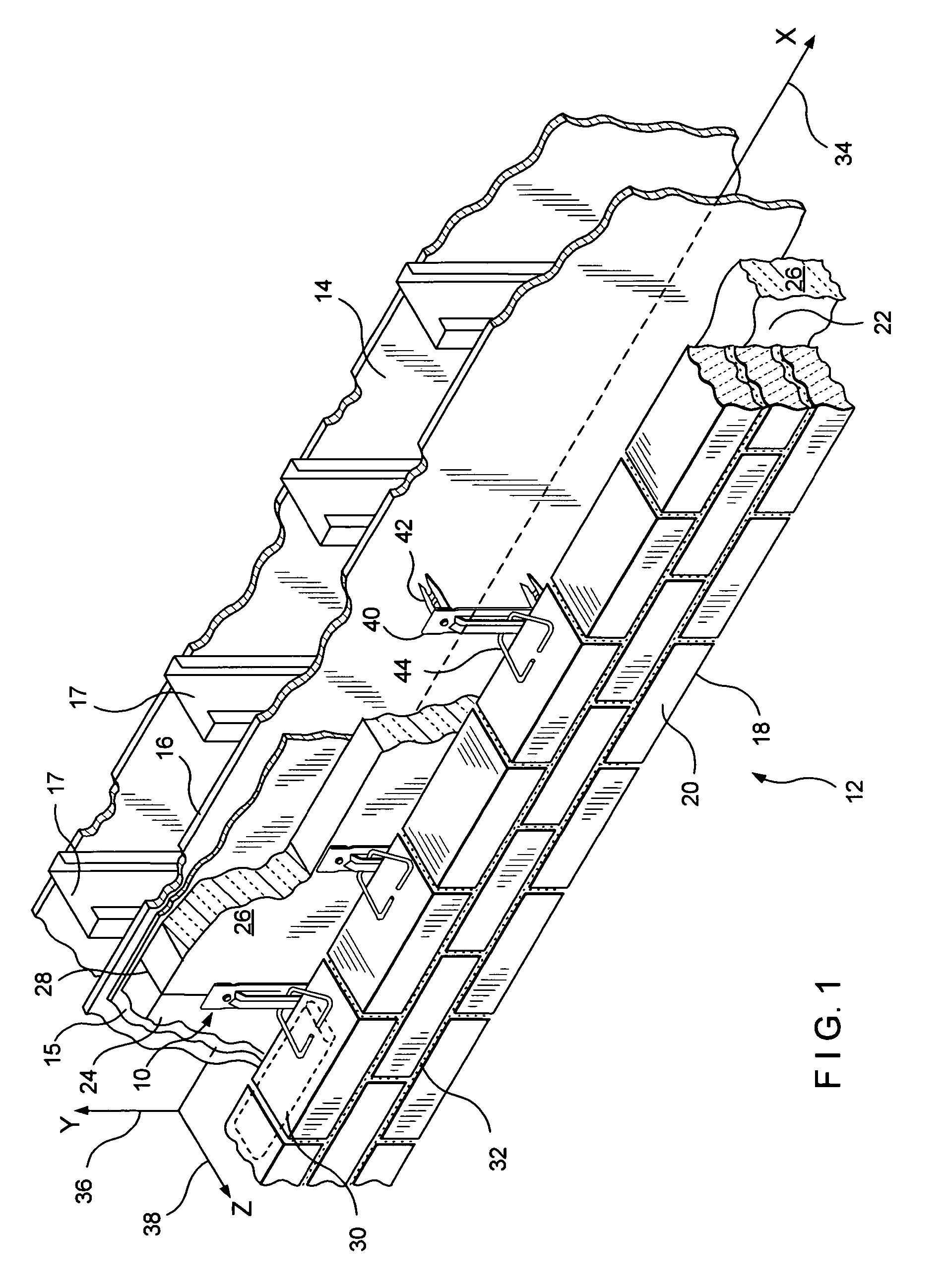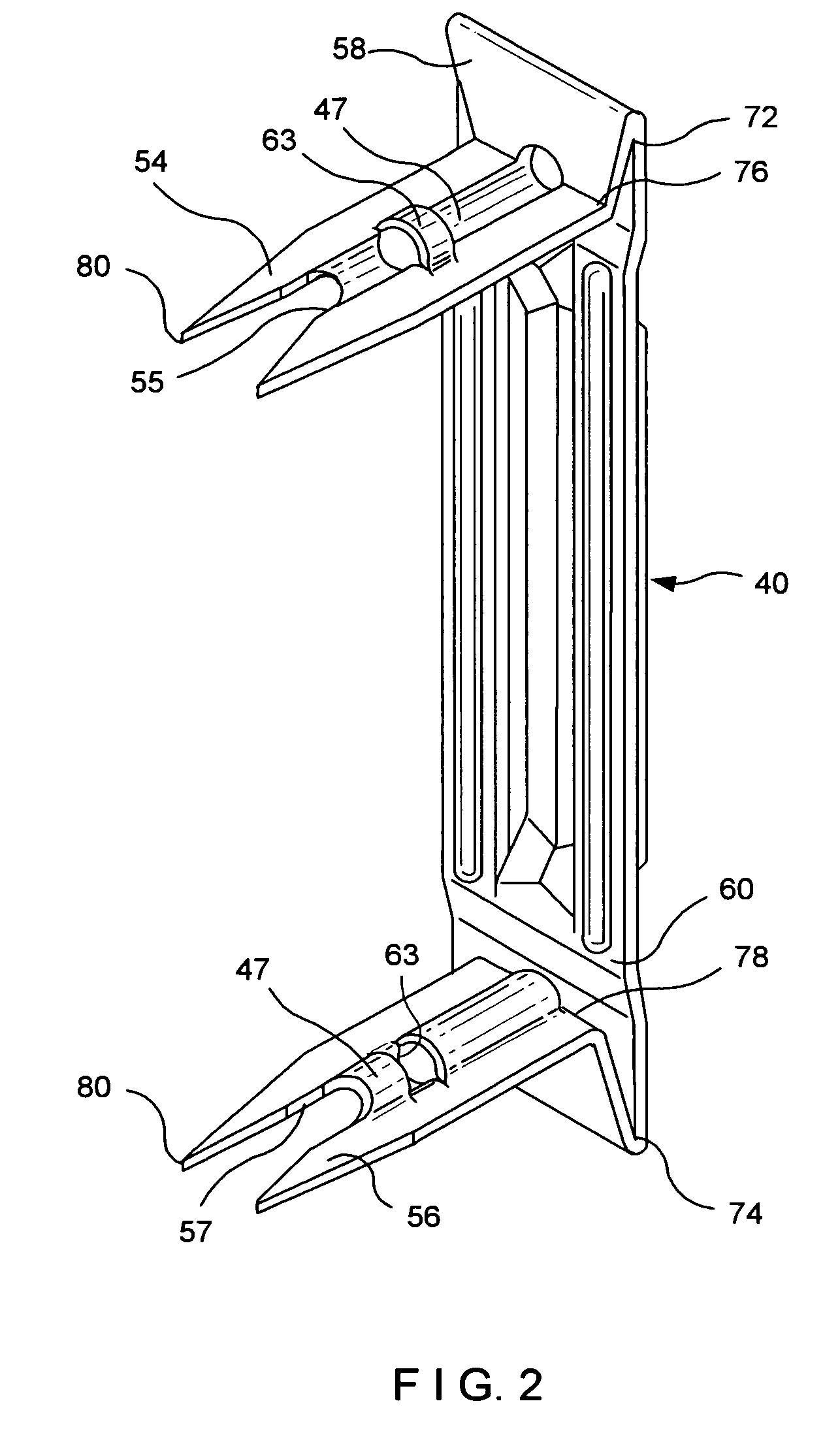Notched surface-mounted anchors and wall anchor systems using the same
a technology of surface-mounted anchors and wall anchors, which is applied in the direction of foundation engineering, building components, structural elements, etc., can solve the problems of system insufficient insulation integrity, loosening of studs, and hampered installation
- Summary
- Abstract
- Description
- Claims
- Application Information
AI Technical Summary
Benefits of technology
Problems solved by technology
Method used
Image
Examples
first embodiment
[0089]In this embodiment, as best seen in FIGS. 6 and 7, strengthening ribs 184 are impressed in the base 158 of wall anchor 140. The ribs 184 are substantially parallel to the bail opening 166 and, when mounting hardware 148 is fully seated so that the base 158 surface rests against the face of insulation 126, the ribs 184 are then raised from the surface of the insulation 126. Thus, the ribs 184 are shown as protruding away the insulation, in a manner opposite that of the This alternative structure is particularly applicable where the outer layer of the inner wythe is noncompressible and does not conform to the rib contour. The ribs 184 strengthen the wall anchor 140 and achieves an anchor with a tension and compression rating of 100 lbf.
[0090]The dimensional relationship between wall anchor 140 and veneer tie 144 limits the axial movement of the construct. Each veneer tie 144 has a rear leg 164 opposite the bed-joint deposited portion thereof, which rear leg 164 is formed contin...
third embodiment
[0098]In this third embodiment, slotted wing portions 262 therealong are bent upwardly (when viewing legs 242 as being bent downwardly) from intermediate base 260 for receiving veneer tie 244 therethrough. The dimensional relationship between wall anchor 240 and veneer tie 244 limits the axial or xz-plane movement of the construct. Each veneer tie 244 has a rear leg 264 opposite the bed-joint deposited portion thereof, which rear leg 264 is formed continuous therewith. The slots 266 provide for z-axis 238 limitation and for adjustability along the y-axis 236 movement of the anchored veneer. The opening of the slot 266 of wing portions 262 is constructed to be within the predetermined dimensions to limit the z-axis 238 movement in accordance with the building code requirements. The slots 266 are slightly larger horizontally than the diameter of the tie 244. The dimensional relationship of the rear leg 264 to the width of spacing between wing portions 262 limits the x-axis movement of...
PUM
 Login to View More
Login to View More Abstract
Description
Claims
Application Information
 Login to View More
Login to View More - R&D
- Intellectual Property
- Life Sciences
- Materials
- Tech Scout
- Unparalleled Data Quality
- Higher Quality Content
- 60% Fewer Hallucinations
Browse by: Latest US Patents, China's latest patents, Technical Efficacy Thesaurus, Application Domain, Technology Topic, Popular Technical Reports.
© 2025 PatSnap. All rights reserved.Legal|Privacy policy|Modern Slavery Act Transparency Statement|Sitemap|About US| Contact US: help@patsnap.com



